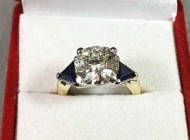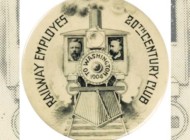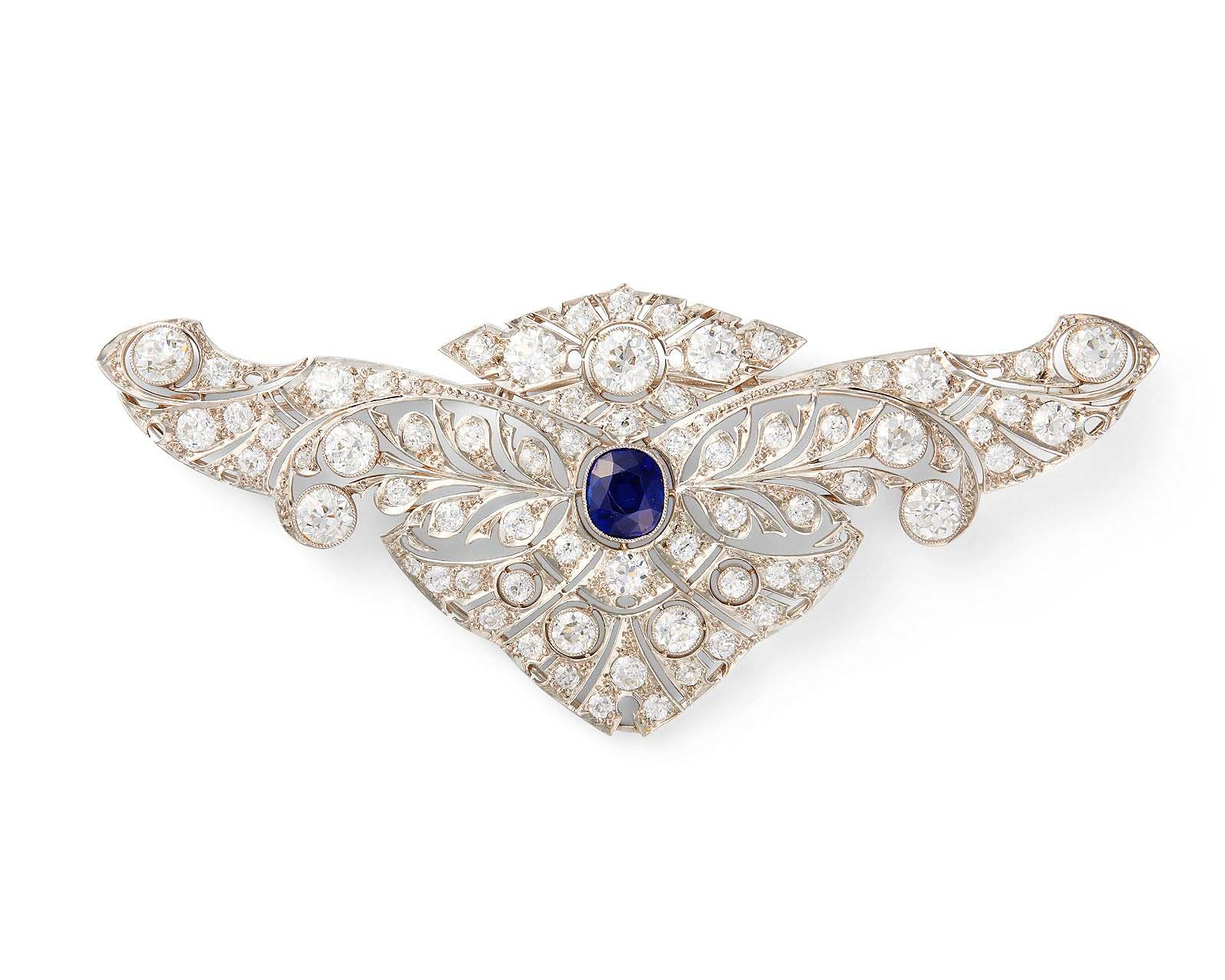
The $437,500 earned by this circa 1910 platinum and diamond brooch with a certified Kashmir sapphire was the highest price of the sale, finishing for more than twice its high estimate. The diamonds were graded G-I, VS/SI.
Review by Rick Russack
BOSTON — On May 4 and 5, Grogan & Company delivered a $3,043,750 sale. Georgina Winthrop, president and fine arts director, has refined the formula used for the company’s sales: she now devotes one day to fine art and one day to jewelry. The firm generally limits its offerings to art and jewelry, consigned, for the most part, by New England estates and families of original purchasers. Decorative arts are added to their sales when appropriate. The firm also conducts specialized Oriental rug auctions, organized by Michael Grogan, a recognized authority in the field. A platinum and diamond brooch with a Kashmir sapphire, selling for $437,500, was the star of the May 5 Fine Jewelry sale.
Old Master prints accounted for four of the five highest prices on May 4, which was devoted to fine arts. Prior to the sale, Winthrop had said she believes prints and multiples, a broad field, to be a growth area: “There are younger buyers who, for example, would like to own a Picasso but his paintings are out of their reach. Selected prints by the artist allow those buyers to own legitimate works by that artist. The same is true for many other artists.” The catalog listings for the Old Master prints do not broach the subject of age or edition; instead, buyers decide for themselves. The catalog includes several photos of each and the staff responded to numerous questions, encouraging prospective buyers to examine the material in person. For the offerings in this sale, Winthrop’s research included taking the prints to the print study room at Boston’s Museum of Fine Arts, in order to ensure the authenticity and quality of the prints.
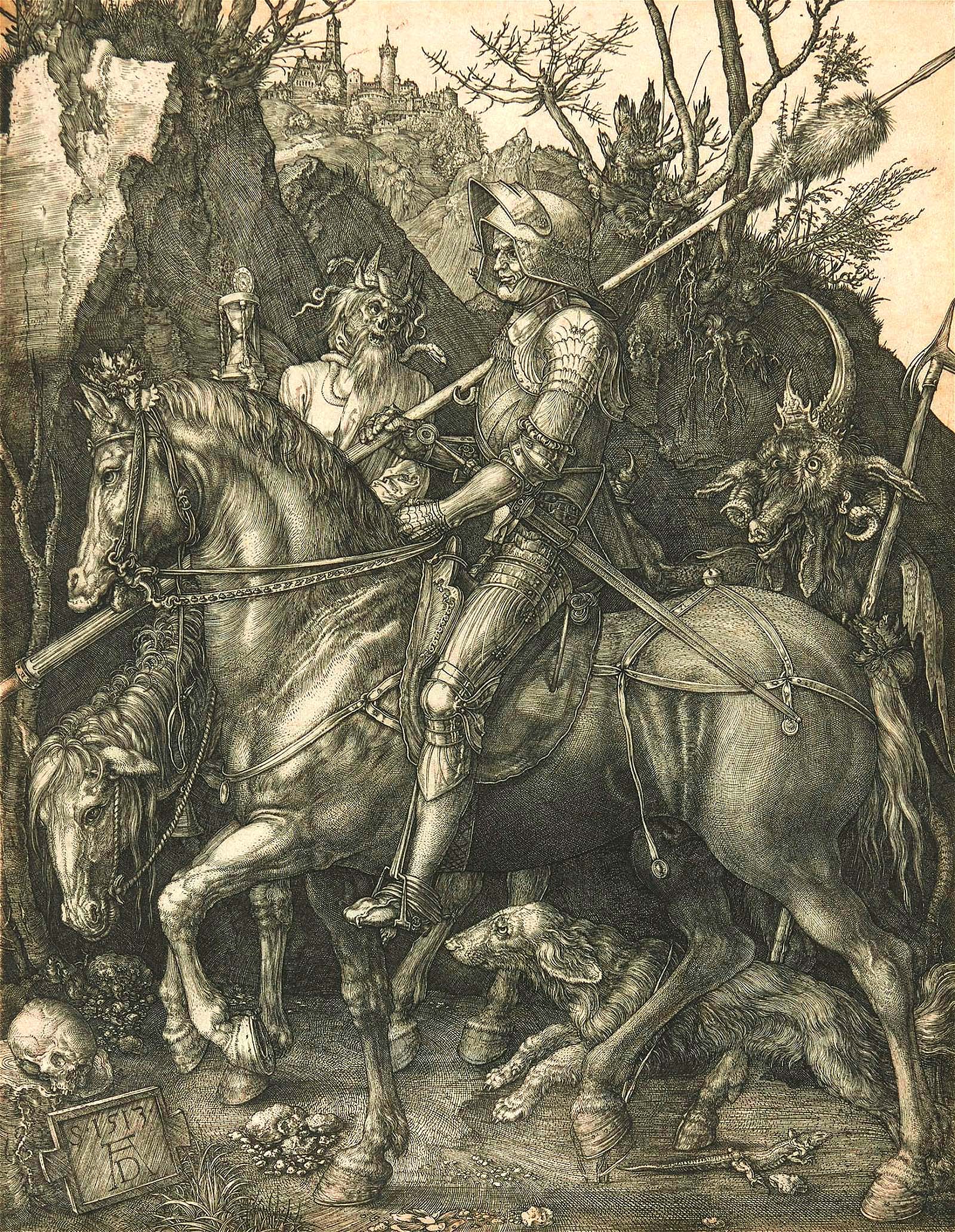
At an even $100,000, Albrecht Durer’s “Knight, Death, and the Devil” led the selection of Old Master prints. There were three works by the artist in the sale and each earned more than $50,000.
These efforts paid off. An engraving by Albrecht Durer (1471-1528), titled “Knight, Death, and the Devil” realized $100,000. Another engraving by the same artist, “Melencolia I,” achieved $62,500, while “Nativity” sold for $56,250. An etching by Rembrandt (1606-1669), “The Angel Appearing to the Shepherds” rounded out the four top Old Master prints, realizing $62,500. To demonstrate Winthrop’s point about Picasso, there were seven prints by him. “The Diver (La Plongeuse),” a 1932 etching with collaged paper additions, signed in pencil, brought $8,125. It was accompanied by its 1944 original bill of sale. Five other signed etchings by Picasso sold for prices ranging from $3,438 to $5,625.
There was far more to the sale than prints and multiples as more than 50 items earned prices in excess of $10,000. American and European works were cataloged separately. The American offerings were topped by a 1966 signed, untitled acrylic and watercolor by Alma Woodsey Thomas (1891-1978), from her “My Garden Series,” which earned $68,750. A signed oil on Masonite by Anna Mary Robertson “Grandma Moses” (1860-1961) reached $55,250. It was titled “Belverdere” on an inventory label dated 1944 and numbered “602.”
The sale included an important group of paintings by Ruth Henshaw Miles Bascom (1772-1848), most of which had descended her family. A pair of pastel and pencil portraits on paper of a husband and wife, facing each other, was bought for $50,000 by David Schorsch, who told Antiques and The Arts Weekly, “This pair is as good as any of Bascom’s work I’ve ever seen. They’re a young couple, they’re beautifully done, and the wife is a beautiful woman. We’re delighted to have been able to buy them.” There were five other lots of works by Bascom, all but one of which had Bascom family provenance. One, a portrait of Thomas Cushing Burr of Ashby, Mass., was mentioned in Bascom’s diary “On February 13, 1834, a day of 20 degree temperature…Thos. Cushing Burr came early to be sketched…” It sold for $8,750. Grogan’s catalog indicates that Bascom’s diary is owned by the American Antiquarian Society in Worcester, Mass.
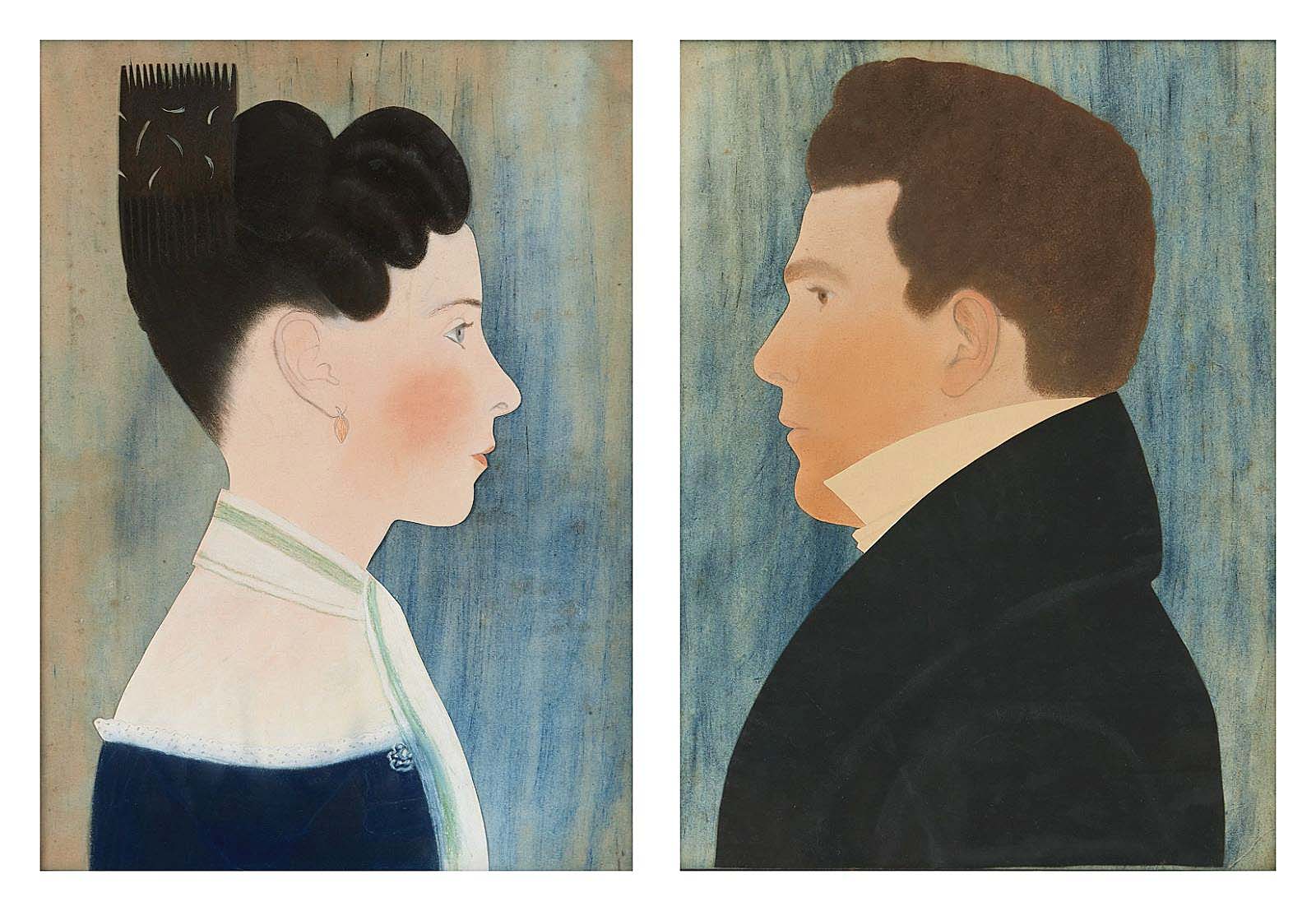
The sale included a group of works by Ruth Henshaw Miles Bascom, most of which had descended within her family. This pastel and pencil pair of an attractive young husband and wife realized $50,000. This pair, and a self-portrait of the artist, were bought by folk art dealer, David Schorsch.
Another, a portrait of a woman in a lace bonnet and black dress, which was cataloged as a purportedly a self-portrait of the artist, earned $7,500 and was also bought by Schorsch. He told us, “The only other known portrait of Bascom is in the Historic Deerfield collection and it’s a well-known painting.” Deerfield catalogs its portrait as circa 1829.
The catalog had an extensive discussion of Auguste Rodin’s bronze, titled “Mme Merrill et sa fille (Mère et sa fille mourante),” which translates to “Mrs Merrill and her daughter (Mother and her dying daughter).” It’s described as a “haunting work, a portrait of loss and sorrow, commissioned by Mr and Mrs Thomas Merrill of Duluth, Minn., to memorialize the death of their daughter, Sally, at the age of 17 in 1904.” In 1908, Mrs Merrill sat for Rodin in Paris and when she returned home, she wrote him a letter, and included a photo showing her, and Sally at the age of six, and requested Rodin “to reproduce and to make immortal my resemblance and that of my much-loved child.” For a variety of reasons, all made clear in the catalog, the work was not completed until 1926. It was 29 inches tall, signed “A. Rodin” and had the “Alexis Rudier Fondeur Paris” foundry stamp; it realized $40,625.
The highest earning painting in the European portion of the sale was “Baie d’Alger,” a landscape surrounding a harbor, by French artist Albert Marquet (1875-1947). It sold for $37,500. A graphite on paper study for a portrait of Mrs Virginia Thaw by French artist Bernard Boutet De Monvel (1881-1949) earned $12,500.
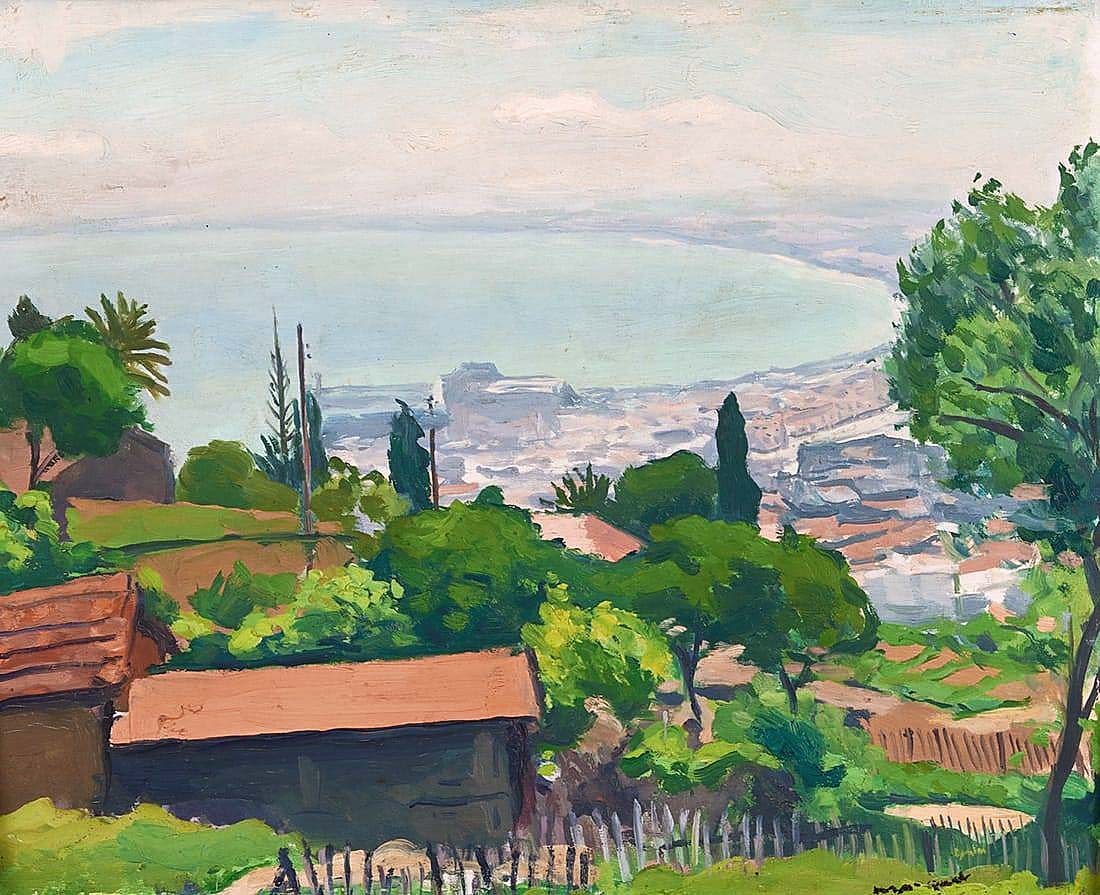
French artist Albert Marquet was known for his harbor scenes, such as “Baie d’Alger,” circa 1932, oil on board, 20-3/8 by 23½ inches. It topped the selection of European paintings at $37,500.
Prior to the sale, Winthrop had said, “The jewelry selection is especially strong, it’s all wearable, and we have the ‘Big Three’ gemstones; a Kashmir sapphire, a Colombian emerald and a Burmese ruby. She was right: the three pieces with these gems combined to bring in well over a half million dollars. As expected, the platinum and diamond brooch with a Kashmir sapphire, selling for $437,500, led the sale. The scroll-and-shield-form platinum brooch was set with a cushion-cut Kashmir sapphire weighing 4.22 carats that was surrounded by numerous diamonds. It was accompanied by both a GIA report and a Gübelin report attesting to the fact the sapphire was from Kashmir and had not been subject to heat enhancement.
Earning $43,750 was an Edwardian platinum, diamond and natural pearl sautoir set with a Colombian emerald. The accompanying GIA report stated that the pearl was natural with no indications of treatment and there was also a Gübelin report stating that the emerald was of Colombian origin. An Edwardian platinum and diamond ring included an oval-cut Burmese ruby weighing approximately 2.10 carats and diamonds weighing a total of 1.8 carats. The accompanying Gübelin report certified that the ruby originated in Burma and had not been enhanced. It sold for $41,250. Also finishing in the top four jewelry lots was a 14K gold and diamond ring centering a pear brilliant-cut diamond weighing 5.52 carats surrounded by additional diamonds. The accompanying GIA report graded the diamond I, SI1, and bidders took it to $62,500.
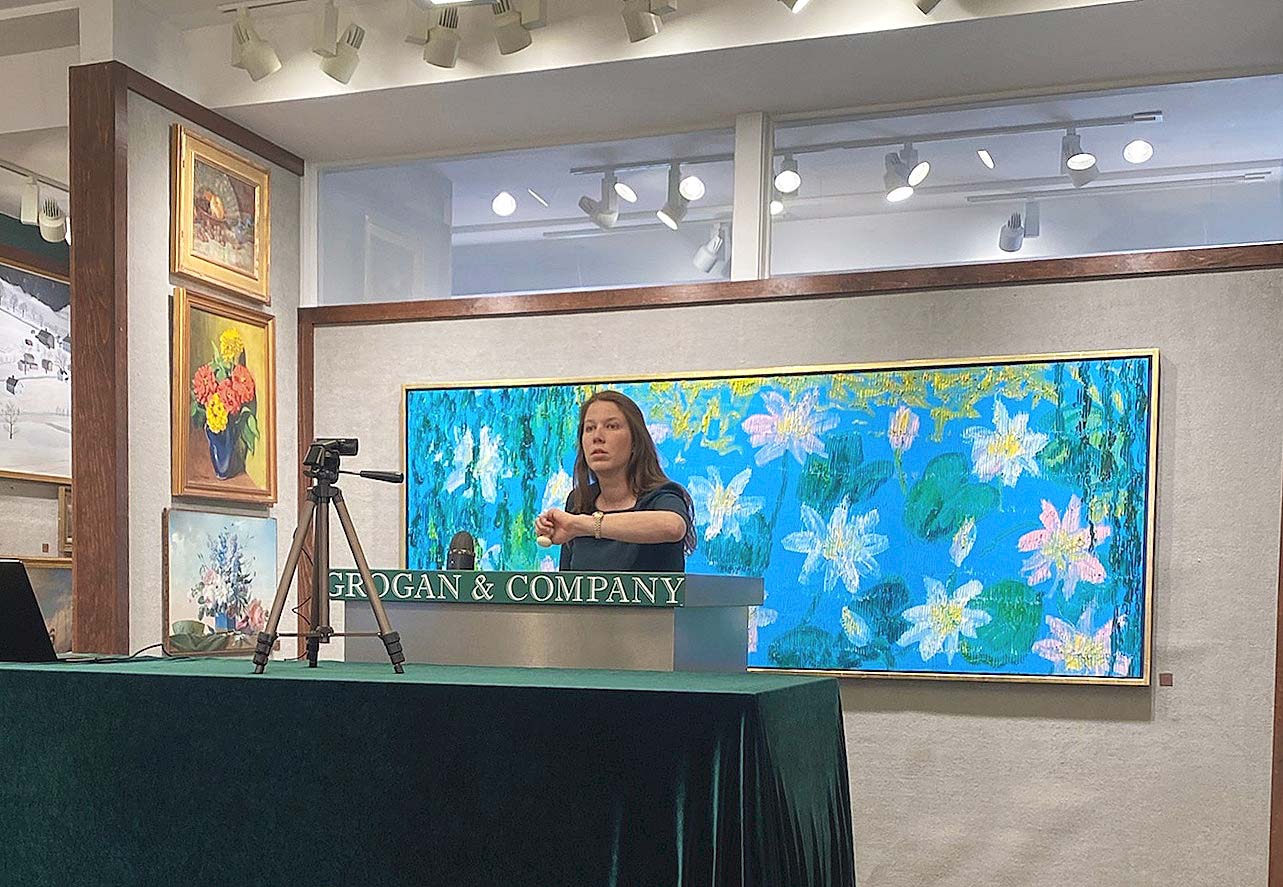
Grogan & Company’s president, Georgina Winthrop, at the podium, preparing to call a lot as “sold.”
Asked for comments after the sale, Winthrop said, “What pleased me most was the diversity of our buyers. We, literally, had bidders from all over the world. That said to me that we were reaching the right people. There were 15 phone bidders for the brooch with the Kashmir sapphire and there were seven or eight bidders on many of the other lots. It was a good mix of retail and trade buyers. Talking to the people interested in the Old Master prints was a good learning experience for me. To sum it up, I’m amazed and happy.”
Prices quoted include the buyer’s premium as reported by the auction house. For additional information, 617-720-2020 or www.groganco.com.


















